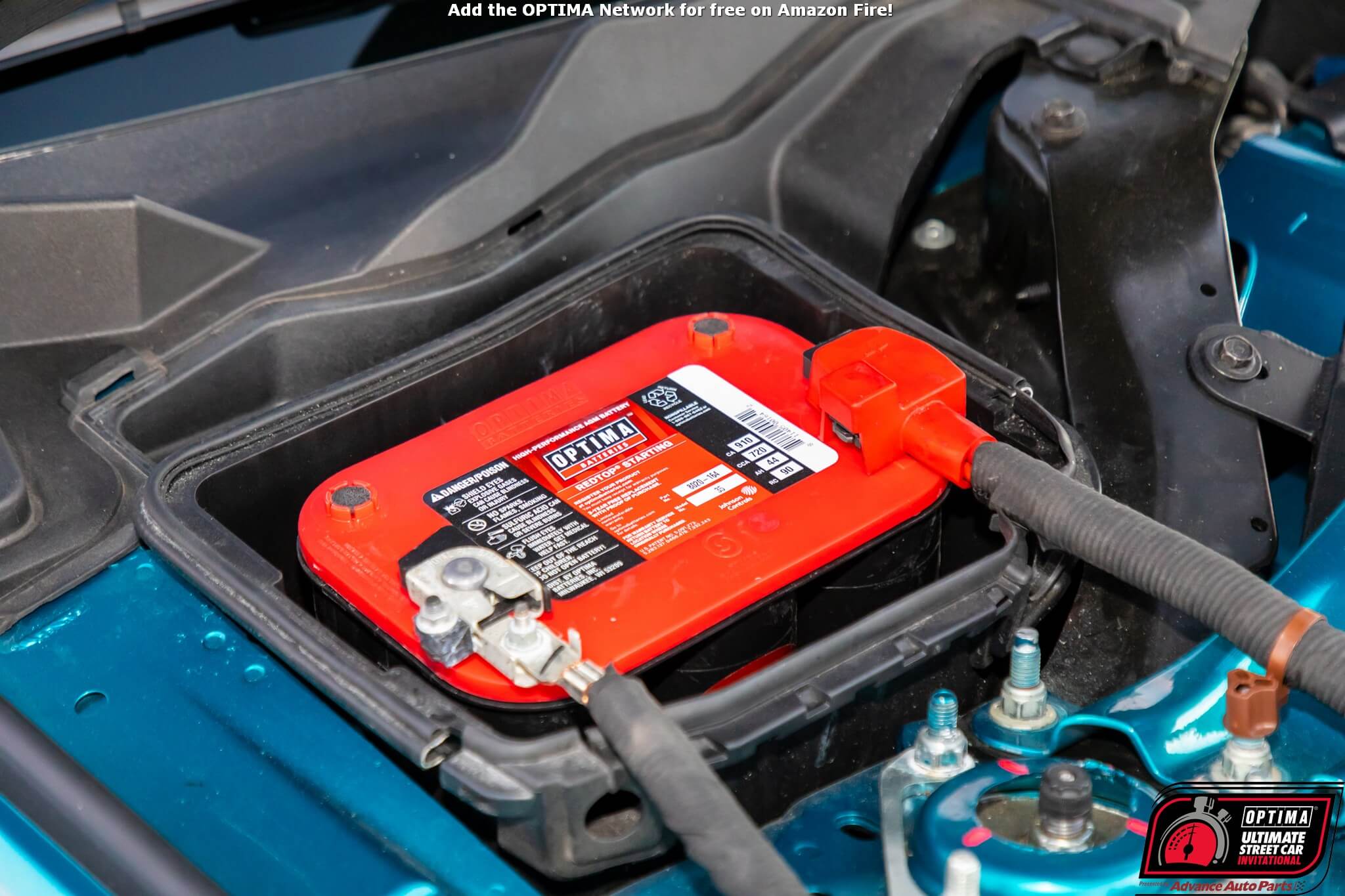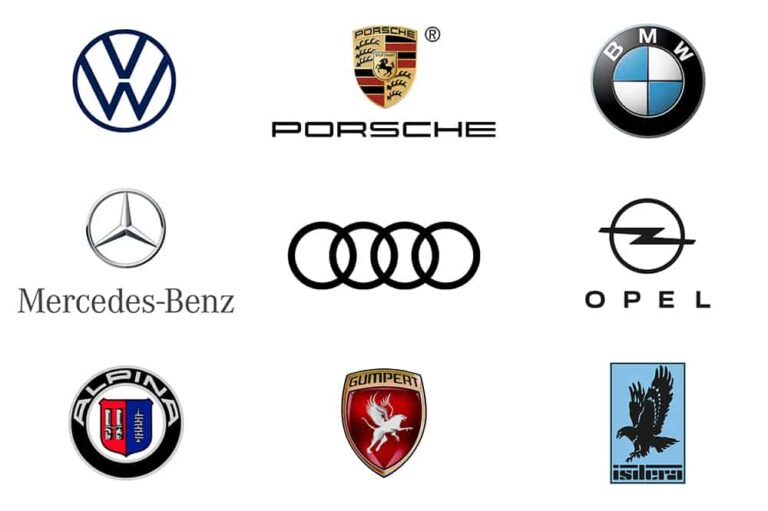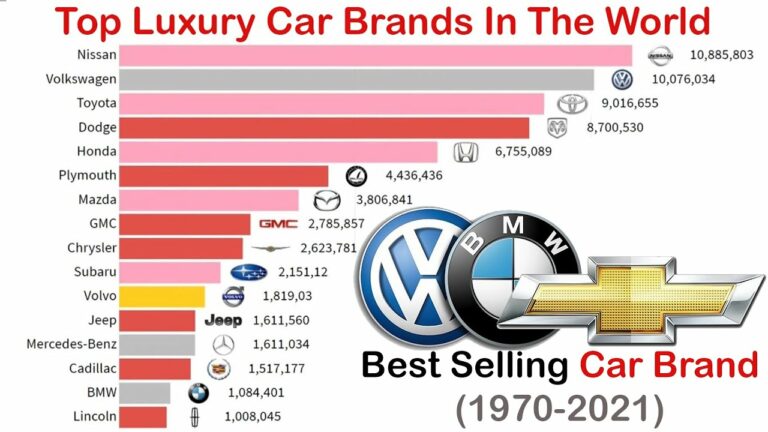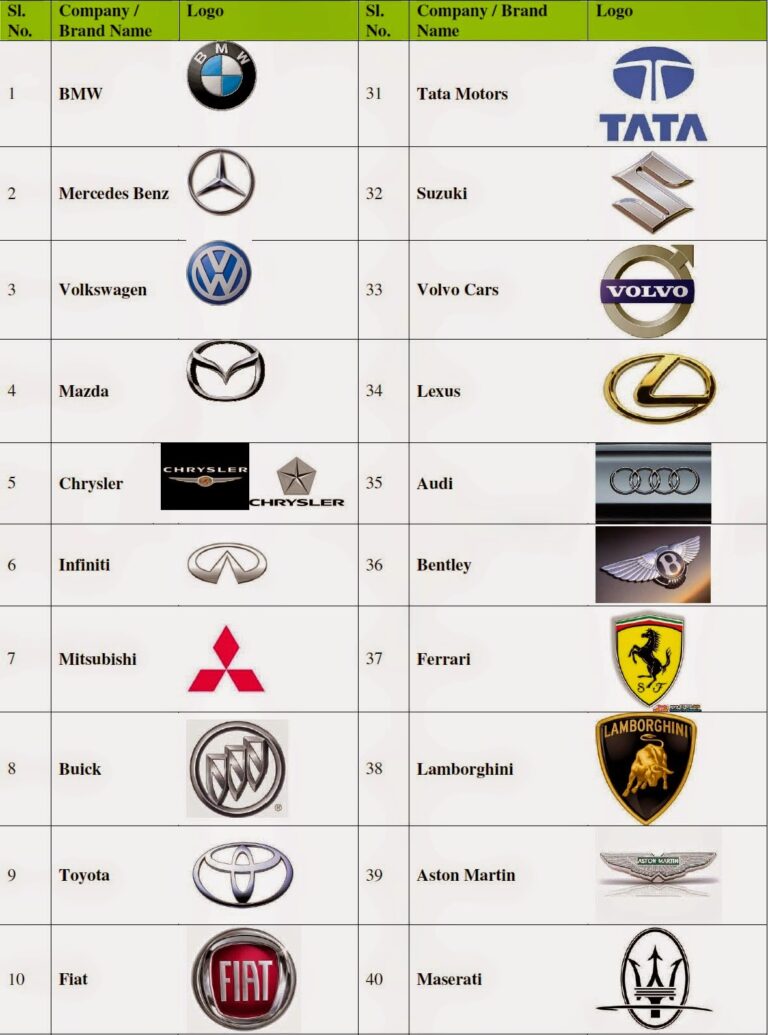What Brand Of Car Battery Lasts The Longest: A Comprehensive Guide to Automotive Power Longevity
What Brand Of Car Battery Lasts The Longest: A Comprehensive Guide to Automotive Power Longevity cars.truckstrend.com
Few automotive components are as crucial, yet often as overlooked, as the car battery. It’s the silent workhorse that powers your vehicle’s ignition, lights, and myriad electronic systems. When it fails, usually without warning, it leaves you stranded and frustrated. Consequently, the question of "What brand of car battery lasts the longest?" isn’t just about saving money; it’s about reliability, peace of mind, and avoiding inconvenient breakdowns.
While there isn’t a single, definitive "longest-lasting" brand that applies universally to every vehicle and every driver, certain brands have established reputations for durability, advanced technology, and consistent performance. However, battery longevity is a complex interplay of manufacturing quality, battery type, vehicle usage, and environmental factors. This comprehensive guide will delve into these critical aspects, helping you make an informed decision for your next battery purchase and maximize its lifespan.
What Brand Of Car Battery Lasts The Longest: A Comprehensive Guide to Automotive Power Longevity
Beyond the Brand: Factors Influencing Battery Lifespan
Before we pinpoint specific brands, it’s vital to understand that a battery’s lifespan isn’t solely determined by its manufacturer. Several significant factors play a crucial role:
- Climate: Extreme temperatures are a battery’s worst enemy. Hot climates accelerate the chemical reactions within the battery, leading to faster degradation and internal corrosion. Cold climates, while not causing degradation, drastically reduce a battery’s cranking power, making it work harder to start the engine, especially if already weakened by heat.
- Driving Habits: Short, frequent trips where the engine doesn’t run long enough to fully recharge the battery can lead to chronic undercharging and sulfation (the buildup of lead sulfate crystals on the plates). Conversely, vehicles that sit unused for extended periods can suffer from parasitic drains (small electrical draws even when the car is off), leading to deep discharge and irreversible damage.
- Maintenance: Neglect is a primary killer of batteries. Corroded terminals impede current flow, and for traditional flooded lead-acid batteries, low electrolyte levels expose battery plates, causing permanent damage. Regular checks and cleaning can significantly extend life.
- Vehicle Electronics & Alternator Health: Modern cars are packed with electronics, demanding more from the battery. Features like start-stop technology require batteries designed for more frequent cycling. A failing alternator or voltage regulator can either overcharge or undercharge the battery, both detrimental to its health.
- Battery Type & Quality: Different battery chemistries (e.g., flooded, AGM, Gel) offer varying levels of durability and performance characteristics. Within each type, manufacturing quality—including the purity of lead, plate design, and case integrity—varies between brands and impacts longevity.

Understanding Key Battery Specifications for Longevity
To truly assess a battery’s potential for longevity, you need to look beyond just the brand name and understand its core specifications:

- Cold Cranking Amps (CCA): This indicates the number of amps a 12-volt battery can deliver at 0°F (-18°C) for 30 seconds while maintaining at least 7.2 volts. While crucial for starting in cold weather, a higher CCA doesn’t directly mean a longer lifespan, but it often signifies a robust build capable of handling stress.
- Reserve Capacity (RC): Perhaps a more telling indicator of sustained performance, RC measures how long (in minutes) a fully charged battery can deliver 25 amps at 80°F (27°C) before its voltage drops below 10.5 volts. A higher RC suggests the battery can power essential accessories longer if your alternator fails, and generally indicates a greater overall energy reserve, which contributes to durability against discharge cycles.
- Ampere-Hour (Ah): This specification, often found on deep-cycle batteries, measures the battery’s total energy storage capacity. It indicates how many amps the battery can deliver for a certain number of hours (e.g., 100 Ah means it can deliver 10 amps for 10 hours). Higher Ah ratings are beneficial for vehicles with significant accessory loads or for those needing deep cycle capabilities.
- Battery Type:

- Flooded Lead-Acid (SLA): The traditional, most common, and most affordable type. They require occasional maintenance (checking electrolyte levels) and are sensitive to vibration and deep discharges. Lifespan typically 3-5 years.
- Absorbed Glass Mat (AGM): A sealed, maintenance-free battery where electrolyte is absorbed in fiberglass mats. They offer higher CCA, faster recharging, better vibration resistance, and are more resistant to deep discharge than SLAs. Ideal for modern vehicles with start-stop systems or high electrical demands. Lifespan typically 4-7 years.
- Gel Cell: Similar to AGM but uses a silica gel to suspend the electrolyte. Excellent for deep cycling and very resistant to vibration and extreme temperatures. However, they can be sensitive to overcharging and are less common for starting applications. Lifespan typically 5-8 years.
- Lithium-ion (LiFePO4): Emerging in automotive starting batteries, these are significantly lighter, offer extremely high CCA, very fast charging, and a much longer cycle life. However, they are considerably more expensive and often require specialized charging systems. Lifespan potentially 8-10+ years, but still new to the mainstream starting battery market.
Top Contender Brands Known for Durability and Performance
While "longest-lasting" is subjective, certain brands consistently receive high marks for quality, innovation, and user satisfaction, often outperforming cheaper alternatives in terms of lifespan and reliability.
-
Optima Batteries:
- Reputation: Renowned for their unique SpiralCell Technology, which uses tightly wound cells rather than flat plates. This design makes them incredibly resistant to vibration and allows for efficient power delivery.
- Types: RedTop (starting), YellowTop (deep cycle & starting), BlueTop (marine/RV). YellowTop is often cited for its longevity due to its deep-cycling capabilities.
- Key Features: High CCA, exceptional vibration resistance, spill-proof, maintenance-free, fast recharging. Often a top choice for off-road vehicles, performance cars, and vehicles with high accessory loads.
-
Odyssey Batteries (by EnerSys):
- Reputation: Considered premium, high-performance batteries, often favored by enthusiasts and for heavy-duty applications. Made with 99.99% pure virgin lead plates.
- Types: Pure Lead AGM batteries.
- Key Features: Extreme CCA, deep cycle capability, excellent vibration resistance, rapid recovery from deep discharge, and a wide operating temperature range. Their pure lead construction contributes to a longer service life and more stable voltage.
-
ACDelco:
- Reputation: A global leader in automotive parts, often supplying batteries as original equipment (OE) for GM vehicles. They offer a range of batteries that balance quality and value.
- Types: Advantage, Professional, and Gold (AGM) series.
- Key Features: Reliable performance, good warranty support, and often a competitive price point for a reputable brand. Their AGM line offers enhanced durability.
-
Exide Batteries:
- Reputation: One of the world’s largest manufacturers of lead-acid batteries, with a long history. They offer a wide range of batteries for various applications.
- Types: Conventional flooded, AGM, and Orbital (spiral cell similar to Optima).
- Key Features: Known for solid, dependable performance across their product lines. Their AGM and spiral cell technologies aim for increased durability and cycle life.
-
Interstate Batteries:
- Reputation: One of the most recognizable brands in North America, known for its extensive network of dealers and strong warranty. They don’t manufacture their own batteries but source them from leading producers like Johnson Controls (now Clarios).
- Types: Conventional flooded (Mega-Tron, Mega-Tron Plus), AGM (MTZ).
- Key Features: Wide availability, excellent warranty coverage, and generally reliable performance thanks to quality manufacturing partners. Their MTZ AGM batteries offer enhanced longevity.
-
DieHard Batteries (now by Clarios/Advance Auto Parts):
- Reputation: A household name for decades, initially sold by Sears. Now manufactured by Clarios (formerly Johnson Controls) and primarily sold through Advance Auto Parts.
- Types: DieHard Gold (SLA), DieHard Platinum AGM.
- Key Features: The Platinum AGM line is particularly well-regarded for its robust construction, high CCA, and resistance to vibration, often rivaling Optima and Odyssey in performance and longevity.
-
EverStart (Walmart/Clarios):
- Reputation: Walmart’s private label battery, often manufactured by Clarios (the same company behind DieHard and Interstate).
- Types: Conventional flooded, ValuePower, Maxx (SLA), Platinum AGM.
- Key Features: While budget-friendly, the EverStart Maxx and Platinum AGM lines often offer surprisingly good performance and decent longevity for their price, making them a popular choice for value-conscious buyers. Their Platinum AGM is essentially a re-branded quality product.
Choosing the Right Battery for Your Needs
Selecting the "longest-lasting" battery also means choosing the right battery for your specific vehicle and driving conditions:
- Consult Your Owner’s Manual: Always start here. It will specify the recommended battery group size (e.g., Group 34, 65, 24F), minimum CCA, and sometimes RC.
- Consider Your Climate: If you live in extreme heat or cold, investing in an AGM battery (like Optima YellowTop, Odyssey, or DieHard Platinum AGM) can provide superior performance and resistance to temperature-related degradation.
- Assess Your Driving Habits: If you primarily make short trips or have a vehicle with start-stop technology, an AGM battery is almost a necessity due to its ability to handle more frequent discharge/recharge cycles without damage.
- Factor in Vehicle Electronics: Modern vehicles with numerous electronic accessories (GPS, infotainment, charging ports, heated seats, etc.) benefit from batteries with higher RC to handle the constant draw.
- Warranty Matters: A longer warranty often indicates a manufacturer’s confidence in their product’s lifespan. Look for at least a 3-year free replacement warranty.
- Budget vs. Longevity: While premium batteries offer superior longevity and performance, they come at a higher price. Balance your budget with your desire for extended life and peace of mind.
Maximizing Your Car Battery’s Lifespan (Practical Tips)
Even the best battery won’t last if neglected. Here’s how to get the most out of your investment:
- Regular Maintenance:
- Clean Terminals: Periodically check for corrosion (a white or bluish powder). Clean with a wire brush and a baking soda-water solution. Apply anti-corrosion grease or spray.
- Check Electrolyte Levels (Flooded Batteries Only): If your battery has removable caps, check the fluid levels every few months and top up with distilled water if needed.
- Avoid Deep Discharges: Each time a battery is fully drained, it loses a bit of its capacity. If your car sits for long periods, use a battery tender/maintainer (not a trickle charger, which can overcharge).
- Limit Short Trips: Ensure your vehicle gets a good 20-30 minute drive at highway speeds at least once a week to allow the alternator to fully recharge the battery.
- Check Your Charging System: Have your alternator and voltage regulator checked annually by a mechanic. An overcharging alternator can boil the battery’s electrolyte, while an undercharging one leads to sulfation.
- Insulate in Extreme Temperatures: In hot climates, a battery blanket can help keep temperatures down. In cold climates, a battery warmer can ensure easier starts.
- Secure the Battery: Ensure the battery is securely mounted to prevent vibrations, which can damage internal components.
Challenges and Solutions for Battery Longevity
- Challenge: Parasitic Drain: Even when off, some vehicle electronics draw power, slowly draining the battery.
- Solution: If your car frequently drains its battery when sitting, have a mechanic diagnose parasitic drains. This often involves checking fuses with a multimeter.
- Challenge: Corrosion: Buildup on terminals restricts current flow and can lead to premature failure.
- Solution: Regular cleaning as described above. Consider using terminal protectors or anti-corrosion washers.
- Challenge: Sulfation: Lead sulfate crystals build up on battery plates when a battery is undercharged or deeply discharged, reducing capacity.
- Solution: While difficult to reverse completely, a good quality battery tender can help prevent sulfation. Some advanced chargers have "desulfation" modes, but their effectiveness on heavily sulfated batteries is limited.
Car Battery Brand Price & Longevity Overview (Estimated)
Please note: Prices are highly variable based on vehicle type, battery group size, retailer, and regional promotions. Lifespan is an estimate and heavily depends on maintenance and usage.
| Brand Name | Common Battery Type(s) | Key Features for Longevity | Typical Price Range (USD) | Estimated Lifespan Factors (Years) |
|---|---|---|---|---|
| Optima Batteries | AGM (SpiralCell) | Extreme vibration resistance, deep cycle, fast recharge | $200 – $350+ | 5-7+ (YellowTop often longer) |
| Odyssey Batteries | Pure Lead AGM | Highest CCA, extreme durability, deep cycle, pure lead | $250 – $450+ | 6-8+ |
| ACDelco | Flooded, AGM | OEM quality, reliable, good value | $120 – $250+ | 4-6 (AGM often longer) |
| Exide Batteries | Flooded, AGM, SpiralCell | Global presence, solid performance, various technologies | $100 – $280+ | 4-6 (AGM/SpiralCell often longer) |
| Interstate Batteries | Flooded, AGM | Wide availability, strong warranty, reliable performance | $120 – $280+ | 4-6 (AGM often longer) |
| DieHard Batteries | Flooded, Platinum AGM | Platinum AGM: robust, high CCA, vibration resistant | $130 – $300+ | 4-7 (Platinum AGM often longer) |
| EverStart (Walmart) | Flooded, Platinum AGM | Budget-friendly, surprisingly good performance for price | $80 – $200+ | 3-5 (Platinum AGM often longer) |
Disclaimer: Prices are highly approximate and subject to change based on market conditions, specific battery model, and retailer. Always check current prices for your vehicle’s exact requirements.
Frequently Asked Questions (FAQ)
Q: How long should a car battery last?
A: On average, a car battery lasts between 3 to 5 years. However, this can vary significantly based on climate, driving habits, maintenance, and battery type.
Q: Is a more expensive battery always better?
A: Not always, but generally, higher-priced batteries (especially AGM or pure lead AGM) use superior materials and technology that contribute to longer life, better performance, and greater resistance to extreme conditions. They often offer a better value in the long run.
Q: Can extreme weather really shorten battery life?
A: Absolutely. Extreme heat accelerates internal corrosion, while extreme cold makes the battery work much harder. Both shorten its overall lifespan.
Q: What’s the difference between CCA and RC?
A: CCA (Cold Cranking Amps) measures the battery’s ability to start the engine in cold weather. RC (Reserve Capacity) measures how long the battery can power essential accessories if your alternator fails. RC is often a better indicator of sustained power and overall energy reserve, which correlates more with longevity.
Q: Should I buy an AGM battery?
A: For most modern vehicles, especially those with start-stop technology, high electronic demands, or if you live in extreme climates, an AGM battery is highly recommended. They are more durable, handle deeper discharges better, and are maintenance-free.
Q: How do I know if my battery is dying?
A: Common signs include slow engine cranking, dimming headlights when idling, flickering dashboard lights, the "check engine" or battery light illuminating, or a bulging battery case.
Q: What is a battery tender, and do I need one?
A: A battery tender (or maintainer) is a device that provides a small, continuous charge to keep your battery at optimal levels, preventing discharge and sulfation. If your vehicle sits unused for weeks at a time, a battery tender is highly recommended to prolong battery life.
Concluding Summary
The quest for "What brand of car battery lasts the longest" leads to a nuanced answer: while premium brands like Optima, Odyssey, and the AGM lines of DieHard, Interstate, ACDelco, and Exide often demonstrate superior durability and performance, a battery’s true longevity is a partnership between its inherent quality and the care it receives.
By understanding key specifications like CCA and RC, choosing the right battery type for your vehicle and climate, and diligently practicing maintenance habits, you can significantly extend the life of any quality car battery. Investing in a reputable brand and following these guidelines will not only ensure dependable starts but also provide the invaluable peace of mind that comes with a reliable vehicle power source.






